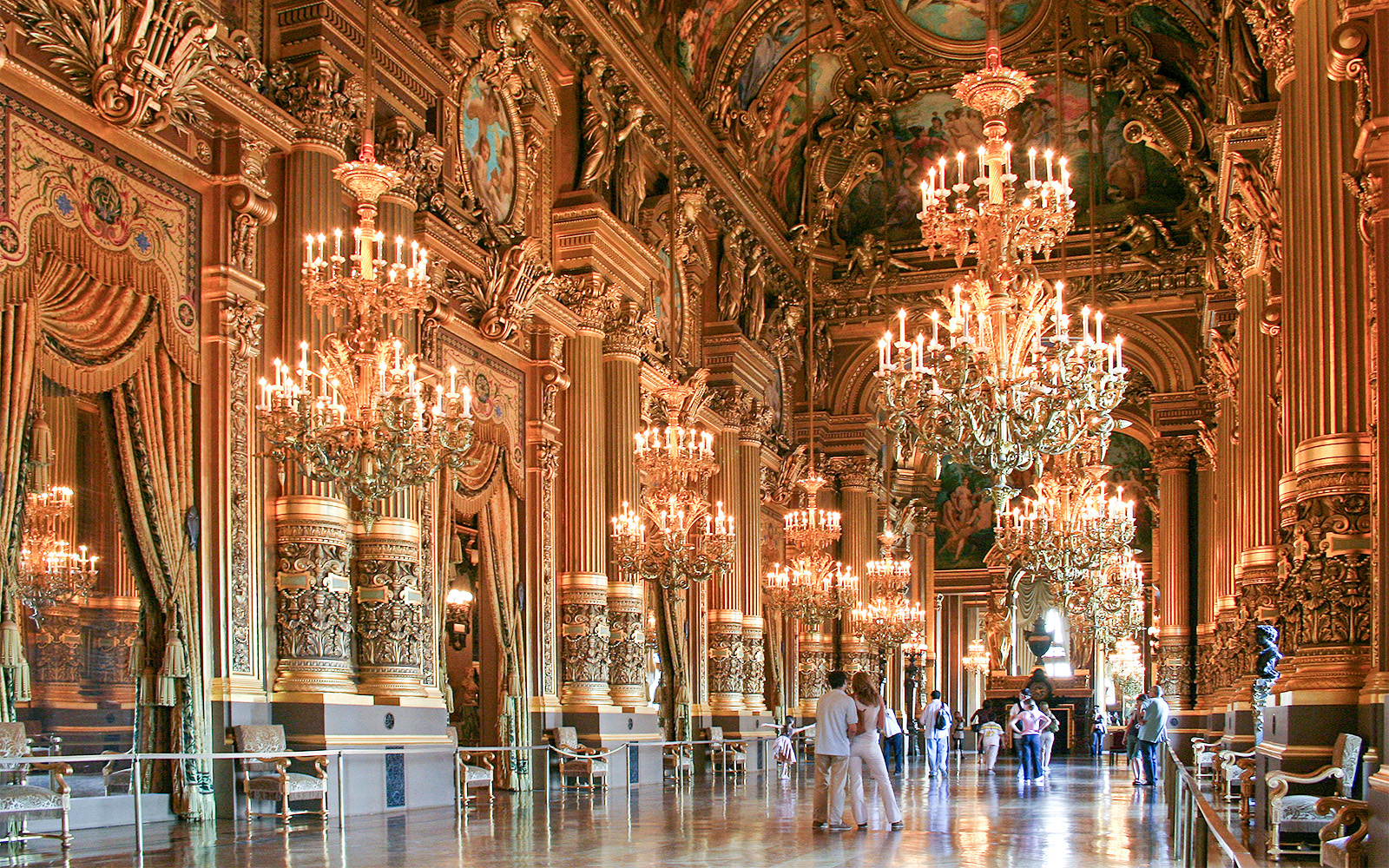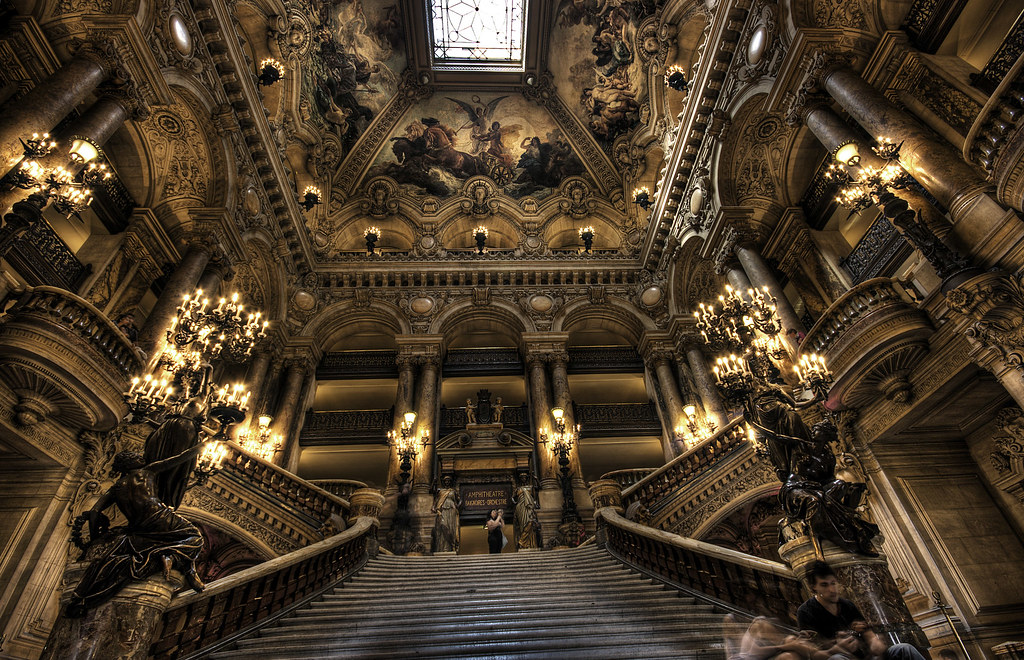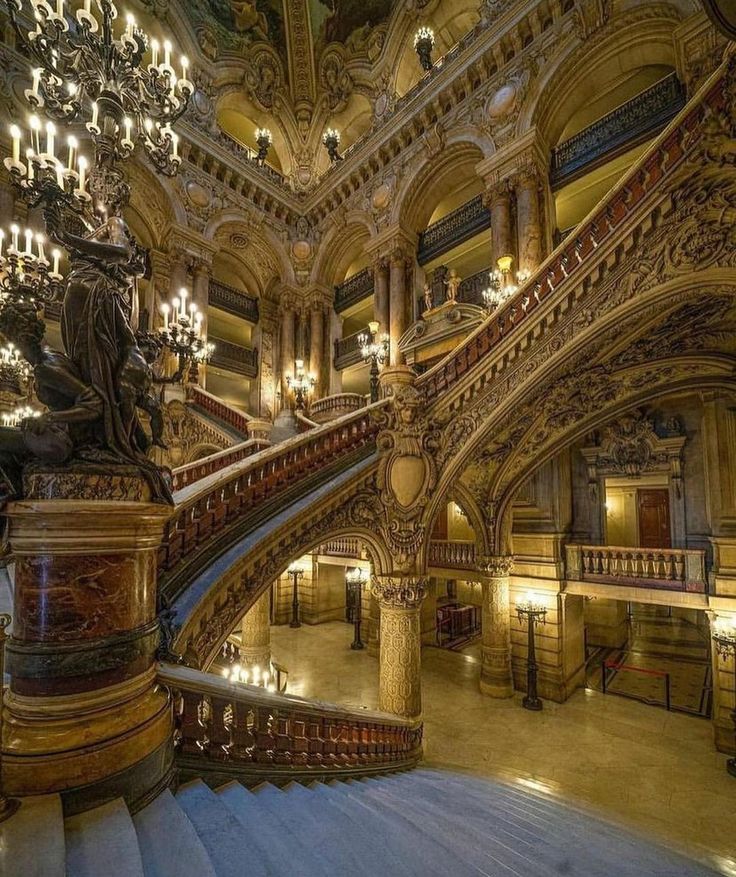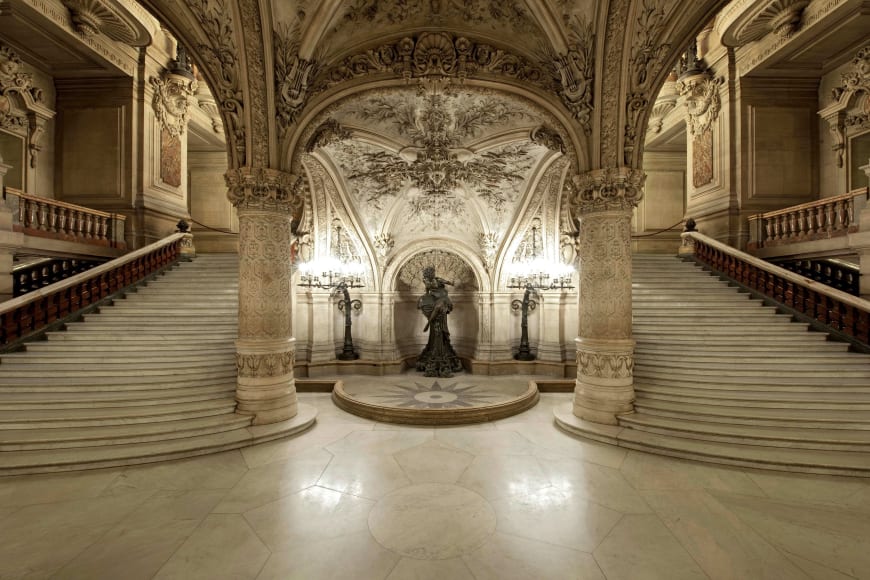The grand staircase of the Opera Garnier in Paris is a breathtaking masterpiece, representing the pinnacle of 19th-century architectural opulence. Designed by Charles Garnier and inaugurated in 1875, this staircase transcends its functional purpose to become a symbol of luxury and social prominence during the Second Empire.

A Marvel of Architectural Design
Crafted from pristine white Carrara marble, the grand staircase exudes timeless elegance. Its balustrades, made from contrasting red and green marble, add a vibrant richness to its appearance. The staircase splits into two graceful sections that ascend to the Grand Foyer, reminiscent of royal palace grandeur.

Charles Garnier drew inspiration for the staircase’s dual-branching structure from Victor Louis’s grand staircase at the Théâtre de Bordeaux. However, Garnier elevated this concept by combining harmonious proportions with intricate details, ensuring both functionality and visual drama. The staircase’s open design fosters fluid movement while transforming it into a central gathering space.
Sculptural Details and Artistic Mastery
The staircase is adorned with stunning sculptures that celebrate artistry and sophistication. Female figures holding torches, created by Albert-Ernest Carrier-Belleuse, stand at the base of the stair pedestals, symbolizing enlightenment and elegance.

Above, the ceiling features paintings by Isidore Pils that illustrate mythological and allegorical themes, such as The Triumph of Apollo and The Enchantment of Music Unfolding Its Charms. Although initially considered too dark, these artworks were reworked by Pils and his students to complement the bright and lavish surroundings. The result is a harmonious blend of art and architecture that enhances the staircase’s theatrical effect.
A Social and Cultural Stage
During the late 19th century, the Opera Garnier was more than just a venue for artistic performances—it was a vibrant social stage. The grand staircase played a central role in this dynamic, offering attendees a place to see and be seen. Its design turned every step into a platform for self-display, reflecting the social aspirations of Parisian high society.
Unlike other theaters of its time, where entry areas were often overlooked, Garnier emphasized the staircase as the building’s heart. This bold decision underscored the opera house’s dual role as both a cultural and social epicenter.
Overcoming Challenges in Construction
The creation of the grand staircase was not without its challenges. Achieving the ideal lighting for the ceiling paintings required extensive on-site modifications. Garnier’s meticulous attention to detail ensured that every element of the staircase worked in harmony, exemplifying his innovative approach to architecture.

Enduring Legacy
Today, the grand staircase of the Opera Garnier stands as an enduring symbol of 19th-century artistry and ingenuity. Visitors from around the world are drawn to its beauty, marveling at its craftsmanship and the cultural richness it represents.
Beyond its architectural brilliance, the staircase captures the essence of an era defined by luxury, creativity, and social spectacle. It remains a testament to Charles Garnier’s vision and the grandeur of Parisian culture, ensuring its place as one of the city’s most iconic landmarks.


